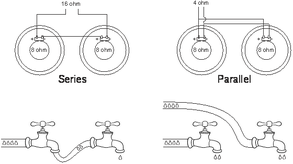

- SERIAL VS PARALLEL PRINTER CONNECTION SERIAL
- SERIAL VS PARALLEL PRINTER CONNECTION PC
- SERIAL VS PARALLEL PRINTER CONNECTION SERIES
They can also be prone to interfaces from other electrical sources, and the reason that most wireless printers are slow, is that the data is usually error checked vigorously. The disadvantage is that there is a limit to the range of the network coverage. The main advantage of a wireless connections is that both the computer and the printer can be moved around, and obviously there are no wires. Today, one of the more popular interfaces for connections of printers is the wireless connections that support 802.11, Bluetooth, or Infrared standards.
SERIAL VS PARALLEL PRINTER CONNECTION PC
Sometimes in a larger company, they will use a pc that is directly connected to the printer as a printer queue manger. The printer uses a standard network cable with an RJ-45 connector. Network printers are directly attached to one of the free network ports on a hub, or a router, and are assigned a network identification such as an IP address. Today most high end printers, and even some of the more basic ones, come with a built-in network adapter or can also have one fitted into them. It is available for for high end printers, and is popular on laptops. The firewire interface is not built in though on many printers or pc’s.

The IEEE 1394, which is also called Firewire, due the super fast speed that it boasted at when it was first released. A USB printer comes with Plug and play compatibility and can be automatically detected and configured by your operating system. USB is much faster than most of the other types of printer interfaces. This is why it makes a great printer interface used on small and medium sized printers and desktop printers and scanners combo’s. The USB port is the most common type of port available on most pc’s today.
SERIAL VS PARALLEL PRINTER CONNECTION SERIAL
Serial printers are very rarely used these days, however sometimes dot matrix printers use this interface. This interface needs to be configured to the serial communication parameters including baud rate, parity bit, or start and stop bits.
SERIAL VS PARALLEL PRINTER CONNECTION SERIES
With series wiring, the output of one pickup goes into the input of another pickup, while with standard parallel. In contrast, wiring two pickups in series produces a longer path with increased resistance, adding volume while preventing the highest frequencies from getting through. The serial printer interface sends the data to the printer one bit at a time. Parallel wiring adds transparency and clarity to the tone. The reason for this is that the data integrity decreases, and you can have loss of data to the printer over a larger length. The maximum length of the parallel cable is usually limited to 10 feet. SuperUser reader Modest is curious about the data transfer rates of parallel and serial connections: Intuitively, you would think that parallel data transmission should be faster than serial data transmission in parallel you are transferring many bits at the same time, whereas in serial you are doing one bit at a time. It uses a standard parallel printer cable, which has a DB-25 connector to connect to the computer and also a 36-pin Centronics connector for the connection to the printer. This port works by sending an 8-bit information stream to the printer. Network capable printers also have a built-in network interface and are connected directly to a port on the network so they can be shared across many computers.Ī parallel printer interface is called (IEEE 1284). Printers are connected to computers using a variety of different interfaces such as parallel, serial, SCSI, USB, or IEEE 1394.


 0 kommentar(er)
0 kommentar(er)
